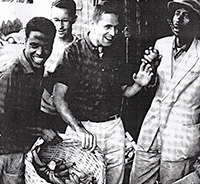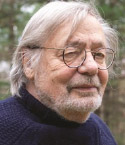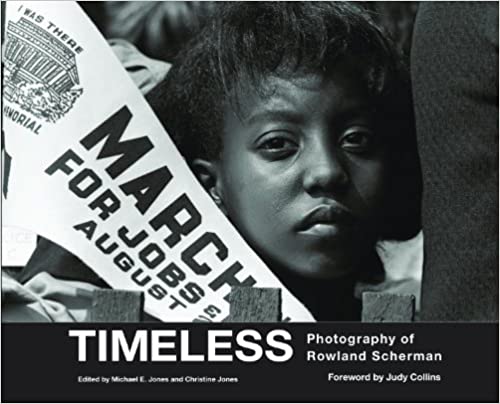The Peace Corps staff member who became the first Peace Corps photographer | Rowland Scherman
This Profile benefited greatly from a Peace Corps WorldWide publication.
by
Jeremiah Norris (Colombia 1963-65)
•
Rowland Scherman writes:
Rowland Sherman
Like so many others, I was thrilled by JFKs inaugural speech. Although I wasn’t a professional photographer, I made a few dollars doing portraits out of a makeshift studio or ‘on location’ on the streets of New York City. I shared a crappy little darkroom with a friend. But JFKs words made me think that I could do something more, and could reach a higher potential if I volunteered my work, and myself to the betterment of my country, instead of simply chasing a buck. I thought my services just might somehow be useful to the new administration.”
Rowland took a bus to Washington, D. C. to seek work with the Peace Corps, announcing his potential availability as an official photographer. He went to Peace Corps headquarters, then a jumble of desks, chairs and bureaucratic confusion as the agency was in its initial staging of a physical presence in the government’s vast bureaucracy.
He grandly announced to a Peace Corps staff member: “I want to be a Peace Corps photographer, I believe I can help you . . . I want to help.” A staffer retorted: “We don’t need photographers, kid, we need doctors, nurses, technicians. Besides, look at all the press we have covering us already.” And, sure enough, the building was crawling with reporters and cameramen, as everything pertaining to the Kennedys and the early days of the New Frontier was newsworthy.
Rowland kept coming back day after day, looking for an opportunity to be useful to the new administration. Then, one day when Princess Beatrix of the Netherlands was visiting, she wanted to have her picture taken with Sarge. By then the press had all left days before, as there was nothing at all worth photographing. A Peace Corps staffer was going nuts and he bellowed down the hallway: “Where’s that kid with the camera?” And Rowland said: “Here I am.” He was instructed to follow the staff member and to address the Princess as “Your Majesty.”
He took a few snaps of Sarge and the Princess and they turned out to be pretty great, with Rowland commenting: “How could I miss. They were both young and dynamic, and attractive and those qualities showed in my pictures — anyone could have done it”.
A couple of days later, Rowland signed to join the Peace Corps Information Arm of the newly formed Agency, and worked there for the next two years. Here, he photographed Peace Corps staff at work, such as with Sarge on Capitol Hill, presenting the Agency’s annual budget, Volunteers in training, etc.
He recalls that his film was farmed out for processing to a generic photo lab that did a lousy job. When Rowland complained, he was asked “well, what do you need”? I need a darkroom, he responded. Then, lo and behold, a few days later, all the gear he had suggested was sitting outside a little storage closet that had running water. So, Rowland used this site and equipment to build a Peace Corps darkroom.

John Coyne & Ernie Fox (Ethiopia 62-64) at the Mercato in Addis Ababa: photo by Rowland Sherman
Initially, Rowland didn’t get a chance to photograph Volunteers at work in their overseas assignments, but, a year later, he was traveling the world and getting great photos of Volunteers, creating along the way a visual record of the first days of Peace Corps. This gallery of photographs by Roland includes images of iconic figures from the 1960s, from musicians Janis Joplin and Bob Dylan, to public figures Bobby Kennedy and Martin Luther King. Name an iconic figure from this era and there is probably a great photo of that person by Rowland.
When Peace Corps was in its infancy, no one understood right away that it was only an idea, and amidst the scramble of chairs and desks to put together a functioning international agency, thankfully . . . there was Sarge, a leader with a knack for finding the right people to staff it, and make it a functioning entity.
And Rowland was there with his camera to inaugurate a visual history of Peace Corps from its formative days, bringing it to life at home and aboard, earning him a Profile in Citizenship.
•
Timeless
Rowland Scherman (PC/W Staff photographer 1961-64), photographer
Peter E. Randall Publisher
2014
$21.77 (paperback) used
Winner of the 2015 Peace Corps Writers Award for Best Book of Photography


No comments yet.
Add your comment